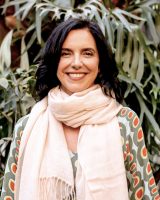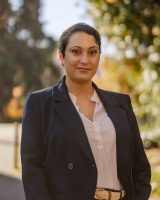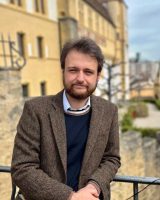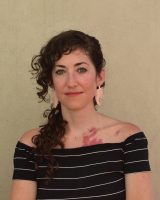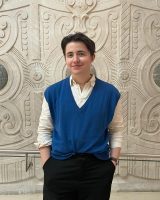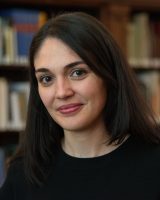CAA News Today
Congratulations to CAA113 Travel Grantees!
posted by CAA — March 27, 2025
Each year, CAA awards travel and support grants for scholars to attend the Annual Conference, funded by foundations and individual donors. We were thrilled to have so many grantees join us in NYC this past February for the CAA 113th Annual Conference!
CAA Edwards Memorial Support Grantees
The CAA Edwards Memorial Support Grants, in memory of Archibald Cason Edwards Sr. and Sarah Stanley Gordon Edwards and made possible by Mary D. Edwards, supports emerging scholars and have received their PhD within the past two years or who are nearing the end of a doctoral program.
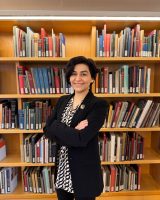 |
Alev Berberoğlu, Bibliotheca Hertziana – Max Planck Institute for Art History Presentation: “Ottoman Quest for Women in Photography: The Case of Elisa Zonaro (1863–1945)” Session: Women and the Global Historiography of Photography, 1840-1940 |
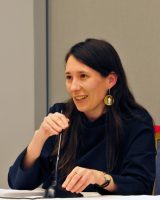 |
Adrienn Kácsor, Bauhaus-Universität Weimar Presentation: “Fugitive Avant-garde” Session: Explosive Objects: Material Histories of Violence in Europe, 1920s–1940s |
Samuel H. Kress Foundation CAA Annual Conference Travel Fellows
Recognizing the value of the exchange of ideas and experience among art historians, the Kress Foundation offers travel grants for scholars presenting on European art before 1830.
Terra Foundation Travel Grants for Underrepresented Scholars of American Art
The Terra Foundation for American Art offered a limited number of conference travel grants for scholars of American art who have historically been underrepresented at CAA conferences to attend the CAA 113th Annual Conference. This travel support encouraged participation by those whose work contributes meaningfully to expanding and transforming understanding of American art narratives, practices, and presentations.
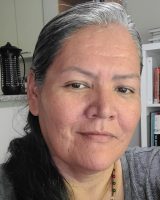 |
Jennifer Bowen, PhD Student, University of Victoria |
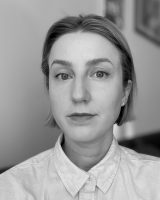 |
Rachel Burke, PhD Student, Harvard University |
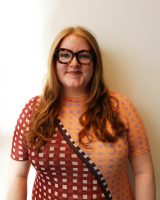 |
Brianne Chapelle, MA student, Hunter College, City University of New York |
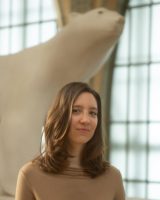 |
Ivana Dizdar, PhD candidate, University of Toronto |
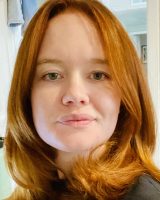 |
Hannah Forsythe, PhD Candidate, The University of Texas at Austin |
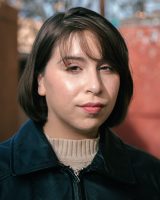 |
Madison Garay, MA Student, University of New Mexico |
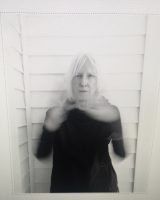 |
Nancy Hart, Independent Scholar |
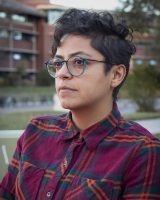 |
Elnaz Javani, Professor, Colorado State University |
 |
Benjamin L. Jones, Provost’s Fellow and Assistant Professor in the History of Art, The Ohio State University |
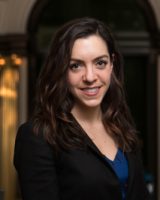 |
Sarah E. Kleinman, PhD Student, Virginia Commonwealth University |
 |
Jacquelyn Delin McDonald, Lecturer University of Texas at Dallas |
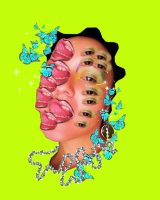 |
Darleen Martinez, Independent Artist |
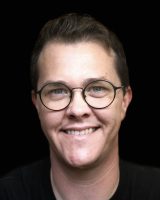 |
Cyle Metzger, Assistant Professor, Bradley University |
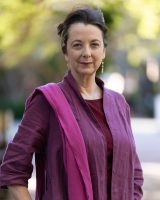 |
Nancy Marie Mithlo, Associate Professor, University of California Los Angeles |
 |
Shane Morrissy, PhD Candidate, Duke University |
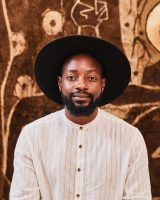 |
Aaron Samuel Mulenga, PhD candidate, University of California, Santa Cruz |
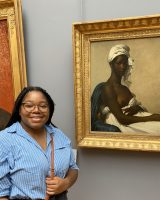 |
Brandee M. Newkirk, PhD candidate, Duke University |
 |
Hyeongjin Oh, Professor, University of Minnesota-Twin Cities |
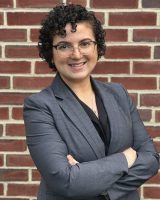 |
Emma Oslé, PhD Candidate, Rutgers University |
 |
Louis Shankar, PhD Student, University College London |
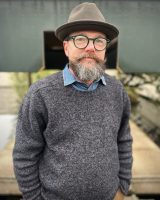 |
Scott Singeisen, Associate Professor, North Carolina Central University |
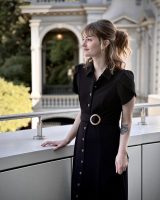 |
Sienna Weldon, Curatorial Assistant, California State Parks, and Lecturer, Sacramento, California |
 |
Luke Williams, Assistant Professor, The University of Texas at Austin |
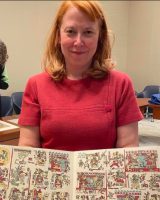 |
Seonaid Valiant, Associate Curator for Latin American Studies, Arizona State University |
 |
Jacob Zhicheng Zhang, PhD Student, University of Toronto |
Call for Applications: CAA-Getty International Program 2026
posted by CAA — March 12, 2025
CAA will begin accepting applications for the CAA-Getty International Program on March 15! Thanks to generous support from Getty, the program—now in its fifteenth year—enables scholars from around the world to travel to Chicago to participate in the CAA 114th Annual Conference, February 18–21, 2026. The program features a preconference colloquium on international issues in art history, followed by a week of sessions, workshops, events, museum visits, and professional development opportunities.
To date, the program has gathered 179 scholars from sixty-one countries, and continues to have significant global impact on the field. These annual convenings have yielded collaboration, community, and lasting connections while also serving to diversify CAA membership, increase international presence at CAA conferences, and foster greater cross-cultural discourse around international art scholarship and practice.
We also invite alumni of the program to apply to return and support first-time participants, take part in program events, and present new scholarship at the Annual Conference in our dedicated CAA-Getty International Program Alumni Session.
The individuals selected for the 2026 program will receive a one-year CAA membership, have their conference registration fee, travel expenses, and accommodation costs covered, and will receive per diems for meals and incidentals.
International art historians, curators, and other visual arts professionals are encouraged to apply!
Visit our CAA-Getty page for eligibility and application requirements. All interested Getty applicants, whether new scholars or alumni, will need to submit a general conference application (individual presentation proposal) and indicate their interest in participating in the CAA-Getty International Program.
Deadline: April 25
This program is made possible with support from Getty.

Congrats to CAA 2024/2025 Professional Development Fellows!
posted by CAA — March 07, 2025
Congratulations to our 2024/2025 Professional Development fellows, Özge Karagöz, Northwestern University (for Art History) and Autumn Ahn, School of the Art Institute of Chicago (for Visual Art)!
Honorable Mentions: Meghaa Ballakrishnen, Johns Hopkins University (Art History); Kelley Booze, Miami University; and Savannah Jackson, Cranbrook Academy (Visual Art).
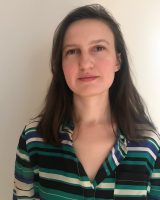 |
Özge Karagöz is a PhD Candidate in the Department of Art History at Northwestern University. As a historian of global modern and contemporary art, her scholarship focuses on intertwined histories of post-Ottoman Turkish and Soviet art, investigating how artistic forms and their localized understandings developed through cross-cultural exchange, interdisciplinary collaborations, and anti-imperialist critique. Her dissertation, “Modern Art and Anti-Imperialist Imagination: Refiguring the Body across Turkey and Soviet Russia,” concerns an early episode of Soviet artistic internationalism with non-Western nations that was eclipsed by the ideological polarization of the Cold War. Previously, this project received generous fellowship support from the Leonard A. Lauder Research Center for Modern Art at the Metropolitan Museum of Art, the American Research Institute in Turkey, and Northwestern’s Paris Program in Critical Theory.” |
 |
Autumn Ahn is an interdisciplinary artist living in western Massachusetts. Ahn works across sculpture, drawing, intervention, and performance, to consider the responsive conditions that produce reality within the human experience. Ahn holds an MFA in performance and critical studies, from the School of the Art Institute of Chicago, and a BFA in painting, from Boston University. She is currently a visiting artist in residence in the Visual Arts Department at Bard College, and the recipient of a 2024 Puffin Foundation Grant and 2024 Mass Cultural Council Creative Individual Award. She has been a resident at Headlands Center for the Arts, a visiting fellow in philosophy at Harvard University, and was awarded a 2023 Arts, Science + Collaboration Initiative award to conduct research with Yerkes Observatory and the University of Chicago. Her work has been exhibited widely, including at lower cavity, Holyoke, MA; False Flag Gallery, New York; Selebe Yoon Gallery, Dakar, Senegal; Le Magasin – Centre National d’Art Contemporain Grenoble (CNAC), among others. Her work has been featured in ARTE, the Emergency Index, and Boston Art Review. She is an advisor for the Converging Liberations Residency at Mass MoCA and is on the board of Boston CyberArts. |
HONORABLE MENTIONS
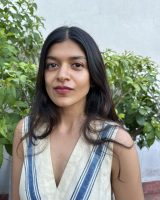 |
Meghaa Parvathy Ballakrishnen is a postdoctoral fellow with the Society of Fellows in the Humanities at Johns Hopkins University, and a curatorial fellow (by courtesy) with the Offices of the Dorothy Wagner Wallis Director and the Eddie C. and C. Sylvia Brown Chief Curator at the Baltimore Museum of Art. Her research and teaching are at the intersection of modern and contemporary art and South Asian art, and her current book project explores the relationship between abstract art and secularism in postcolonial South Asia. Her research has been generously supported by the Center for Advanced Study in the Visual Arts at the National Gallery of Art, the American Institute of Indian Studies, the Paul Mellon Centre, the Rockefeller Archive Center, and the Getty Research Institute. |
 |
Kelley Booze is an interdisciplinary artist whose practice explores perception, spatial awareness, and the quiet dynamics of everyday life. She holds a BFA in fine art from Columbus College of Art and Design (2009) and is working toward an MFA at Miami University in Oxford, Ohio, Kelley’s work engages with the subtle, often overlooked moments that shape our relationship to the world. Through a variety of materials including choreography and movement, Kelley creates work that reflects the fluidity of time and the interconnectedness of space and experience. Kelley’s work has been exhibited nationally and she has also participated in international artist residencies, expanding her exploration of site, context, and the nature of perception. In addition to her studio practice, Kelley has taught art classes and workshops and led public art initiatives with diverse communities. Through her work, she encourages a deeper awareness of the small, intimate details that often go unnoticed, offering new ways to engage with the spaces and experiences we inhabit. |
 |
Savannah Faith Jackson is a multidisciplinary artist and MFA candidate in fiber arts at Cranbrook Academy of Art, where she holds a Gilbert Fellowship. She earned her BFA in photography and imaging from NYU’s Tisch School of the Arts in 2023. Her commitment to arts education began in 2022 while teaching digital photography to women in a homeless shelter, and she currently educates high school students at Cranbrook Art Museum. Jackson’s work has been exhibited nationally, including as part of Rest is Power at NYU’s Center for Black Visual Culture and the exhibition of her first-prize photograph Morgan in a Moment of Self-Reflection at the Photo Review competition exhibition Woodmere Art Museum, Chestnut Hill, PA. In 2024, she participated in the inaugural Detroit Art Fair. Her practice has garnered several prestigious awards, including the 2022 Thomas Drysdale Production Award for her project The Dream is the Truth, the 2024 Larson Venture Award, and a 2024 Maxwell/Hanrahan Foundation Materials Award. |
The Michael Aurbach Fellow for Excellence in Visual Art Announced!
posted by CAA — March 07, 2025
Congratulations to this year’s recipient of the Michael Aurbach Fellowship for Excellence in Visual Art, Eli Craven!
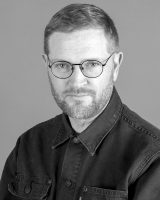
Eli Craven is a lens-based artist based in Lafayette, Indiana. Craven’s research resides in the critical investigation of the image and its relationship to ideologies of sexuality, desire, and death. He holds an MFA in photography from the University of Illinois at Urbana-Champaign and an undergraduate degree in photography from Boise State University. His work is exhibited nationally and internationally, most recently at Kant Gallery, Copenhagen; KlompChing Gallery, Brooklyn; and at Blue Sky, Oregon Center for the Photographic Arts, in Portland. Select clients include Corriere della Sera, gestalten publishers, Penguin Random House, and the Paris National Opera. He is currently an assistant professor of photography at Purdue University.
HONORABLE MENTIONS
 Jeff Beebe received his BFA from the American Academy of Art College, Chicago, and his MFA from the School of Visual Arts (SVA) in New York, and has taught art and design in both cities. In addition, he has spent over a decade working as a graphic designer in the publishing and education industries. For the last fifteen years his work has focused on Refractoria, an imagino-ordinary world that is equal parts autobiography and fantasy.
Jeff Beebe received his BFA from the American Academy of Art College, Chicago, and his MFA from the School of Visual Arts (SVA) in New York, and has taught art and design in both cities. In addition, he has spent over a decade working as a graphic designer in the publishing and education industries. For the last fifteen years his work has focused on Refractoria, an imagino-ordinary world that is equal parts autobiography and fantasy.

Chloe Pascal Crawford is a multidisciplinary artist highlighting the labor undertaken by disabled people to set the conditions for their existence in public spaces. Her work is often exhibited in relation to her perpetually seated sightline, challenging conceptions of lowness as an abject or overlooked place. She has shown at the Museum für Moderne Kunst, Frankfurt; Artists Space, New York; VAE, Raleigh, NC; and Hua International, Berlin. Crawford has been a recipient of fellowships from the Ragdale Foundation, Santa Fe Art Institute, and the Vermont Studio Center. She has a BFA from the University of the Arts, Philadelphia, an MFA from Mason Gross School of the Arts, and attended the Whitney Museum Independent Study Program. She is currently an assistant professor at Michigan State University.
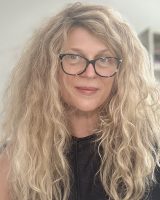 Natalija Mijatović received a BFA from the University of Montenegro, and an MFA in painting from the Pennsylvania Academy of the Fine Arts. Mijatović has exhibited internationally, including at the National Gallery of Serbia; CUE Art Foundation, New York; Philadelphia Museum of American Art; and the Dom Museum, Vienna, among many others. Mijatović is a recipient of the Joan Mitchell Foundation MFA Grant, the Faculty Excellence Award from the Savannah College of Art and Design; Center for Contemporary Art (Podgorica, Montenegro ) Award; and was in residence as Cité Internationale des Arts, Paris. She is professor in and chair of the Department of Art and Design at the University of Delaware.
Natalija Mijatović received a BFA from the University of Montenegro, and an MFA in painting from the Pennsylvania Academy of the Fine Arts. Mijatović has exhibited internationally, including at the National Gallery of Serbia; CUE Art Foundation, New York; Philadelphia Museum of American Art; and the Dom Museum, Vienna, among many others. Mijatović is a recipient of the Joan Mitchell Foundation MFA Grant, the Faculty Excellence Award from the Savannah College of Art and Design; Center for Contemporary Art (Podgorica, Montenegro ) Award; and was in residence as Cité Internationale des Arts, Paris. She is professor in and chair of the Department of Art and Design at the University of Delaware.
Millard Meiss Publication Fund: Apply Now + Congrats to Fall 2024 Grantees!
posted by CAA — February 25, 2025
CAA is now accepting applications for the Millard Meiss Publication Fund. Twice yearly, grants are awarded through this fund to support book-length scholarly manuscripts in art history, visual studies, and related subjects which have been accepted by a publisher on their merits but cannot be published in the most desirable form without a subsidy. Thanks to the generous bequest of late Professor Millard Meiss, CAA has been awarding these grants since 1975.
Visit our website to learn more about the application process, criteria, and to apply.
Deadline: March 15
Congratulations to the Meiss Fall 2024 Grantees!
Yong Cho, The Woven Image: The Making of Mongol Art in the Yuan Empire (1271–1368), Yale University Press
Robert Maxwell, The Memory of Past Acts: Presence, Loss, and Making History in Illuminated Cartularies, c.1050 – c.1220, Pontifical Institute of Mediaeval Studies
Amanda Cachia, Hospital Aesthetics: Disability, Medicine, Activism, Manchester University Press
John Peffer, Private Subjects: Family Photography in South Africa and the Right to Opacity, Duke University Press
Rachel Silveri, The Art of Living in Avant-Garde Paris, University of Chicago Press
Art History Travel Fund: Apply Now + Congrats to Fall 2024 Grantees!
posted by CAA — January 14, 2025
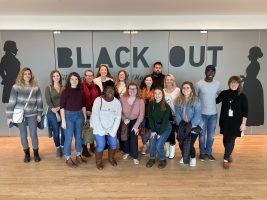
Students from Rachel Stephens’s course on American portraiture visiting Black Out: Silhouettes Then and Now at the National Portrait Gallery, Washington, DC. Stephens was a 2019 Art History Travel Fund recipient.
CAA is now accepting applications for the Art History Fund for Travel to Special Exhibitions. Twice yearly this fund awards up to $10,000 to eligible undergraduate and graduate art history classes to cover travel, accommodations, and admission fees for students and instructors to attend museum exhibitions. Visit our website to learn more about eligibility and application requirements!
Deadline: April 15
Congratulations to the Art History Travel Fund Fall 2024 Grantees!
In Fall 2024, CAA awarded grants via the Art History Fund for Travel to Special Exhibitions to Auburn University, Spelman College, and the University of South Florida!
Auburn University
Instructor: Kathryn Floyd
Course: Curating Beyond the Canon
Exhibition: Imagining Black Diasporas: 21st-Century Art and Poetics
Location: The Broad, Los Angeles, California
Spelman College
Instructor: Bernida Webb-Binder
Course: Introduction to Pacific Art
Exhibition: Hawaiʻi Triennial 2025
Location: Honolulu, Hawaiʻi
University of South Florida
Instructor: Sarah Howard
Course: Curating Beyond the Canon
Exhibition: Prospect.6: The Future Is Present, The Harbinger Is Home
Location: New Orleans Museum of Art, New Orleans, Louisiana
Apply for the Michael Aurbach Fellowship for Excellence in Visual Art!
posted by CAA — August 15, 2024
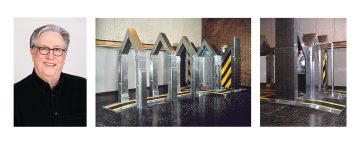
Michael Aurbach, The Confessional (1994), Mixed Media 10.5’ x 12’ x 36’
Established in 2022, the Michael Aurbach Fellowship for Excellence in Visual Art recognizes and honors CAA members who have obtained an MFA or equivalent in studio art and are currently teaching studio classes full-time or part-time. The purpose is to support these artist members as they fulfill their goals as visual arts professionals.
On an annual basis, CAA grants a $7,500 award and registration to the CAA Annual Conference to a qualified artist member teaching at an American or international university/community college. A jury of artists will adjudicate the fellowship and a proposal will not be required; the recipient will be selected solely based on their work.
Learn more about fellowship application requirements here.
Deadline: November 1
Funds for Travel to Special Exhibitions Available Twice Per Year!
posted by CAA — August 14, 2024
The Art History Travel Fund, established in 2018 to provide students with opportunities to gain first-hand knowledge of original works of art by supporting travel to special exhibitions in the US and around the world, will now have two application windows per year for qualified faculty!
This fund awards up to $10,000 to eligible undergraduate and graduate art history classes to cover travel, accommodations, and admission fees for students and instructors to attend museum exhibitions. Learn more and apply!
Deadlines:
October 15 for Spring 2025 exhibitions
April 15 for Fall 2025 exhibitions
Millard Meiss Publication Fund: Apply Now + Congrats to Spring 2024 Grantees!
posted by CAA — June 07, 2024
CAA is now accepting applications for the Millard Meiss Publication Fund. Twice yearly, grants are awarded through this fund to support book-length scholarly manuscripts in art history, visual studies, and related subjects which have been accepted by a publisher on their merits but cannot be published to their greatest potential without a subsidy. Thanks to the generous bequest of the late Professor Millard Meiss, CAA has been awarding these grants since 1975.
Learn more about the application process and apply here.
Deadline: September 15
Congratulations to the Meiss Spring 2024 Grantees!
Shira Brisman: The Goldsmith’s Debt: Conceptions of Property in Early Modern Art, University of Chicago Press
Atreyee Gupta: Non-Aligned: Art, Decolonization, and the Third World Project in India, Yale University Press
Peyvand Firouzeh: Intimacies of Global Sufism: The Making of Ne‘matullahi Material Culture between Early Modern Iran and India, Indiana University Press
Sherry Fowler: Buddhist Bells and Dragons, Under and Over Water, In and Out of Japan, University of Hawaii Press
Brendan McMahon: Iridescence and the Image: Material Thinking in the Early Modern Spanish World, Penn State University Press
Winnie Wong: The Many Names of Anonymity: Portraitists of the Canton Trade, University of Chicago Press
2024 Art History Travel Fund Grantees Announced!
posted by CAA — April 29, 2024
The Art History Fund for Travel to Special Exhibitions is designed to grant instructors of qualifying art history classes the resources to attend special museum exhibitions both in the US and abroad. These grants cover travel, accommodation, and admission fees for selected classes up to $10,000. Congratulations to the 2024 grantees!
University of Mississippi
Instructor: Kris K. Belden-Adams
Course: Art Now (Art of the 21st Century)
Exhibition: Whitney Biennial 2024
Location: The Whitney Museum, New York City
Penn State University
Instructor: Lindsay S. Cook
Course: Theories and Practices of Conservation
Exhibition: Rediscovering the Sculptures from Notre-Dame and The Medieval Library of Notre Dame of Paris
Location: Musée de Cluny, Paris
Applications for the next round of grants will be accepted by CAA beginning in fall 2024. Questions about the program can be sent to Cali Buckley, Manager of Grants and Awards and Director of the CAA-Getty International Program.



